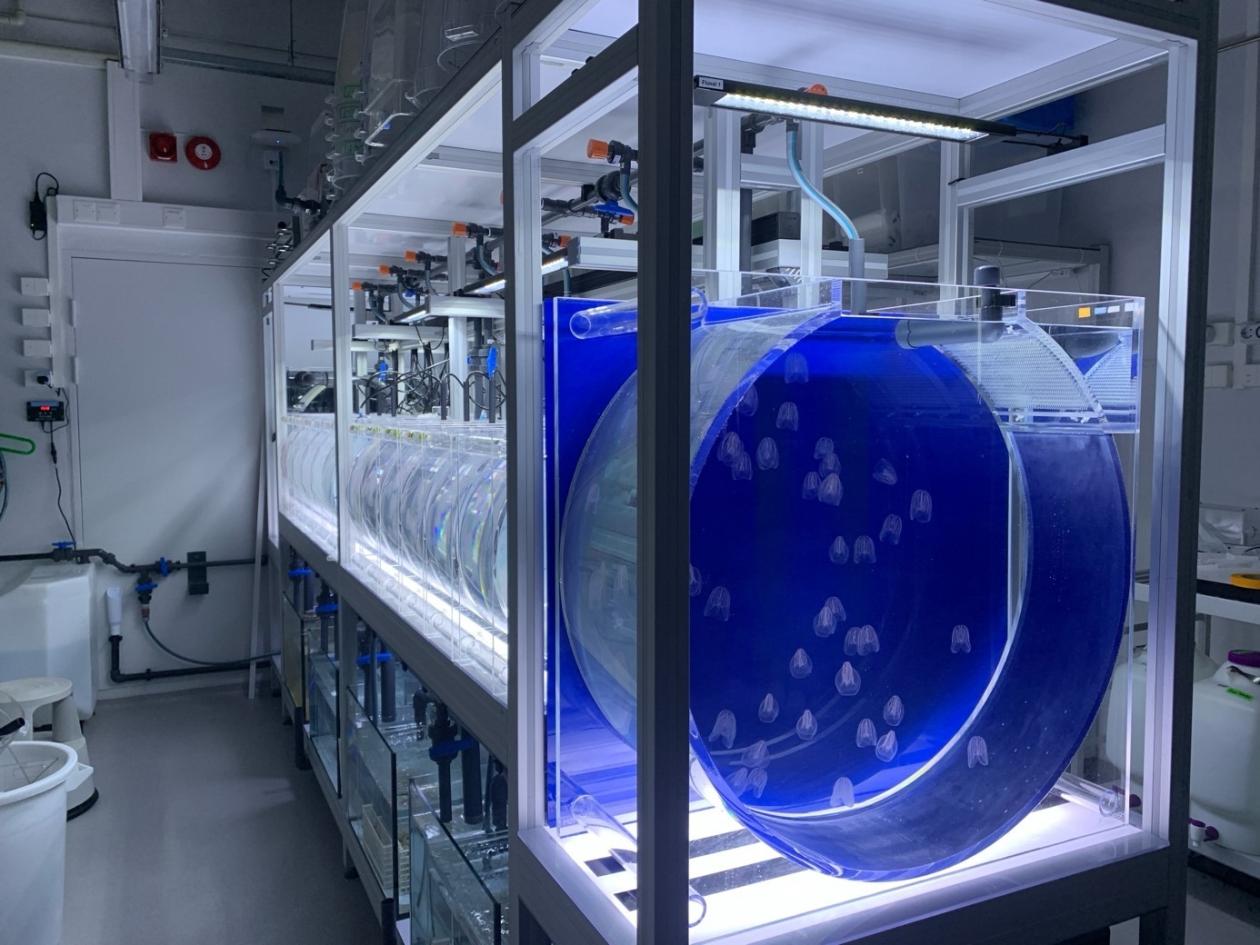Ctenophore Facility
The ctenophore Mnemiopsis leidyi (sea walnut) in our laboratory in Bergen, Norway.
Main content
The Ctenophore Facility, also called CtenoFarm, supports research at the Michael Sars Centre focusing on ctenophore species. We have been maintaining a stable culture of Mnemiopsis leidyi (sea walnut) since 2018, and occasionally keep or breed five additional ctenophore species: Beroe cucumis, Beroe gracilis, Bolinopsis infundibulum (stable culture since 2022), Euplokamis dunlapae, Pleurobrachia pileus (stable culture since 2023).
The culture
Tank Parameters and Environmental Control
- 60 kreisel tanks (cylindrical aquariums) ranging from 10L, to 25L and 180L.
- Tanks are distributed across six independent recirculated systems.
Kreisel tank design:
- Inlet & outlet chamber separated by a screen to prevent damage to ctenophores.
- Spray bar inlet creates a circular water flow, keeping comb jellies in suspension in the water column.
Facility supplied with running sea water (local natural sea water, from 100 m depth) temperature: 10 and 20°C and mixing of these. Salinity 34 ppt. Filtered 20, 10 and 1 micron, Activated Carbon filter, and UV-C treated.
Environmental Monitoring
Constant monitoring of temperature, salinity and photoperiod.

Production Capacity
Induced spawning performed on demand for research needs.
Eggs and recently hatched larvae are produced as required.
- Eggs Production: 1000-5000 eggs daily.
- Juvenile Production: Ongoing provision of juveniles at various stages. Weekly output of juveniles on average: 1000-5000.
- Adult Production: Continuous mature adult stock.
Culture maintenance
Rearing and keeping Mnemiopsis leidyi
- Ctenophores are holoplanktonic animals feeding exclusively on live plankton. They are hermaphrodites and daily spawners. Life cycle is mainly temperature dependent, but density and food availability affect developmental time.
- A periodical sea water replacement is therefore required, either by refilling, automated or manual transfer of animals to keep the life cycle, quality- and number of eggs and sperm optimal.
- Animals must be suspended in water constantly.
- All tanks, pipes and tubes need regular cleaning and scrubbing.
Live plankton feeding
As ctenophores feed exclusively on live plankton, the facility cultures its own live food supply. Ctenophores are daily fed with captive-raised planktonic prey, including:
- Live rotifer Brachionus plicatilis
- Live Artemia nauplii
- Live copepods
- Prey size adjusted to the life cycle stage of the ctenophores.
Field collections
- 2-10 cruise collections per year, on UiB/IMR Bratstrøm boat, mainly in Korsfjorden.
- Pier collections in addition.
- The purpose is to enrich the species diversity of cultured ctenophores in the facility.
Microscopy and Imaging
- Zeiss bright and dark field Stereomicroscope ZEISS SteREO Discovery.V8 (magnification 10X to 80X) with camera Axiocam 208 color.
- Access to a common microscope room.



